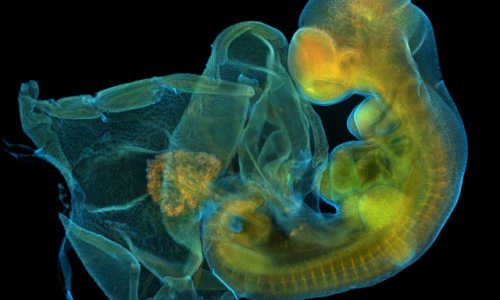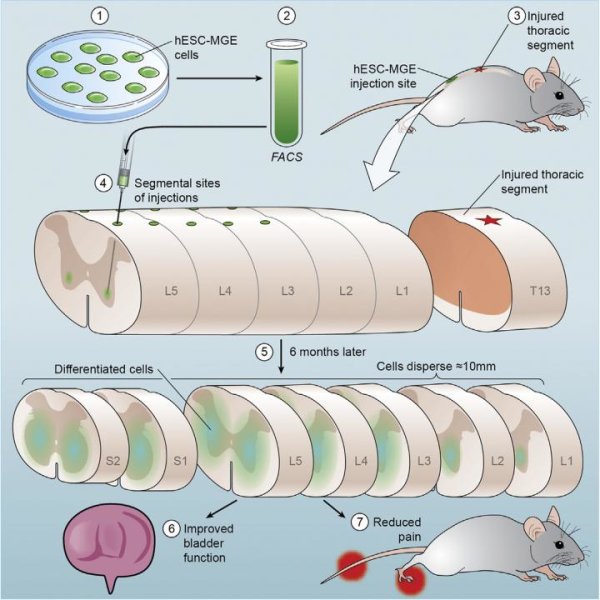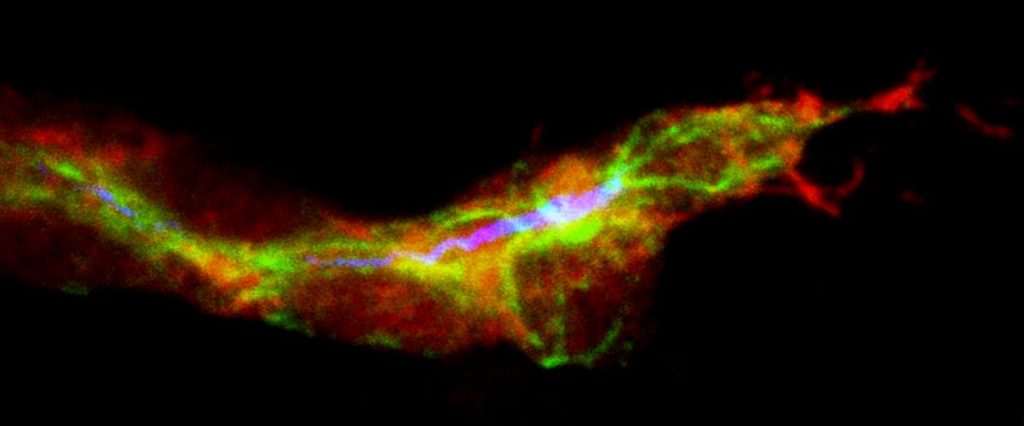Researchers from the University of Dresden have used embryonic stem cells to grow an intact spinal cord in a petri dish, the team reported this week. It’s an enormous achievement in a field that has long viewed neural tissue as the ultimate challenge, and one which could give hope to millions of people suffering from spinal cord injuries.
Photo credit: Eduardo Zattara (University of Maryland, College Park), Embryology 2012, Marine Biological Laboratory, Woods Hole, and Development. via Flickr.
The spinal cord, a cylinder about the width of a little finger which runs down the backbone and is the core component of the central nervous system, is a hugely complex structure. Creating spinal cord tissue from stem cells has eluded researchers for years.
Professor Elly Tanaka and her research group at the DFG Research Center for Regenerative Therapies Dresden – Cluster of Excellence at the TU Dresden (CRTD) demonstrated for the first time the in vitro growth of a piece of spinal cord in three dimensions.
For many years Elly Tanaka and her research group have been studying the regenerative potential of axolotls at the molecular level. The Mexican salamanders have the potential to regenerate their spinal cord and other organs to restore full functionality after injury. Mammals such as humans are not able to regenerate most organs. The restoration of the spinal cord in axolotl occurs in a three dimensional structure similar to an embryonic spinal cord. Due to their positions in the tissue, cells in the regenerated spinal cord know which function to perform in the restored tissue. “In this study we applied the knowledge gained about the regenerative potential in axolotls to a mammal, the mouse” explains Professor Elly Tanaka.
Single mouse embryonic stem cells embedded in a three-dimensional matrix and were grown in neural differentiation medium led to the clonal development of neuroepithelial cysts. These cysts settled in the midbrain and hindbrain along the neural axis. “Our goal, however, was to generate spinal cord in vitro,” says Dr. Andrea Meinhardt, a postdoc at the CRTD. “For this reason we added retinoic acid to the culture medium on the second day of the 3D cell culture.” The result not only caused the neural tissue to switch to spinal cord but also induced the formation of a local signaling center for forming all the different cell types of the spinal cord. “For the first time we could hereby reconstruct the structure of a typical embryonic neural tube in vitro,” said Andrea Meinhardt. „With this study we have moved a tiny step closer to turn the idea of constructing a three-dimensional piece of spinal cord for transplantation in humans into reality“ says Elly Tanaka.
Story Source:
The above story is based on materials provided byCRTD/DFG-Research Center for Regenerative Therapies Dresden – Cluster of Excellence at the TU Dresden.





